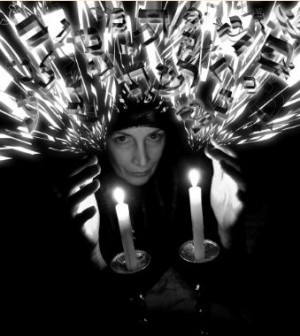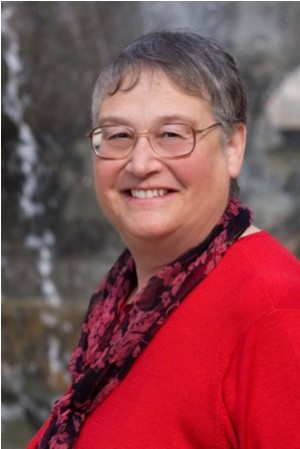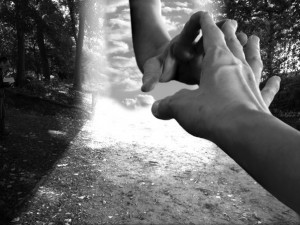Chava Weissler: Tradition and Renewal
Chava Weissler is a writer, scholar, and folklorist who teaches Judaism, folklore, and women’s studies at Lehigh University. Her book on tkhines (Jewish women’s prayers of the 17th to 18th centuries) is one of the most widely-read resources in that field; she’s working now on a book about Jewish Renewal.
Zeek spoke with her about about her work on the Havurah and Renewal movements their similarities and differences as alternatives to congregational davening, the blurry boundaries which come with being a participant-observer, and why she’s fascinated with the Jewish life of “non-elites.”
ZEEK: You graduated from Brandeis with a degree in Near Eastern and Judaic Studies, but didn’t pursue rabbinic school; I know that JTS [the Jewish Theological Seminary] wasn’t accepting women at that time…
CW: I graduated in 1967, and no one was accepting women rabbinical students. However, my motivation for attending JTS was not the pulpit rabbinate. It was then accepted practice that budding Judaica scholars would attend JTS for five years to do intensive text work. My advisor, Alexander Altmann, alav ha-shalom, suggested I do my doctorate at the Hebrew University. However, I stopped my studies and took a job, in June 1967, as a secretary at the Israeli Embassy in Washington, D.C., where my near-bilingualism stood me in good stead.
ZEEK: Fast-forward a bit: you taught yourself Yiddish, immersed yourself in folk tales, and discovered that you wanted to look at Judaism the way a folklorist looks at things. Can you say more about that lens?
CW: Take, for instance, the question of how ordinary Jews adapted kabbalah into pietistic rituals. As an undergraduate I studied kabbalah and medieval philosophy, but I’m interested in what people who have a non-authoritative relationship to Jewish tradition do with it.
I became interested in the Havurah movement in part because of its rejection of certain kinds of rabbinic authority, organizational authority. I’m interested in women in part because they were disempowered, they didn’t have the authoritative say in traditional Ashkenazic Jewish culture. I was interested in what they made of their relationship to tradition.
Also, I love the food and music and crafts and storytelling as they were expressed in the Jewish past. That’s the Jewish life of non-elites, the people who aren’t the scholars, who aren’t the rabbis, who aren’t the philosophers, who aren’t the deep kabbalists. I’m not studying Rabbi Isaac Luria; I’m studying how Lurianic rituals filtered down to the ordinary people.
“Expressive culture” is a term of art in folklore. It means folk tales, folk music, dances, cuisine. Expressive culture is a term I prefer because it doesn’t posit that there has to be a “folk” who have it. The field of folklore has moved beyond the stage of thinking that there’s a pure folk that you have to study. We’re all folks! But the discipline pays attention to how we frame our stories. How we use food as celebration or mourning. Those kinds of things.
ZEEK: I’d like to talk a bit about the Havurah movement. Your dissertation was titled “Making Judaism Meaningful: Ambivalence and Tradition in a Havurah Commnity.” How did you decide on that subject?
CW: I was part of the Havurah movement. I was an almost-founder of the Fabrangen community in Washington, D.C. The Havurah movement was of deep importance to me. It provided me with a way to be Jewish after a fling with Orthodoxy while in college, and my disillusionment with Israel after my junior year in college. (At that stage, it was a personal, not a political disillusionment.)
RB: I’d like to hear more about that.
CW: Habonim was the first place that really felt like home to me. Aside from the shul with the old guys davvening in the morning. My parents thought it was way too political, and they didn’t want me to go! But one reason that Israel became problematic for me was – I had somehow absorbed, in an odd and personal way, the Zionist myth as a way of understanding my own unhappy adolescence. I had reached the conclusion that I was a miserable adolescent who didn’t get along with my parents because I was a Jew in exile. Therefore, I thought, when I got to Israel, I would feel at home. But of course when I got there I felt utterly foreign, even though I could speak Hebrew pretty well.
And also at that time, there were the first solid stirrings of being a lesbian, though I didn’t recognize it until afterwards. So there was this dream of going to Israel and feeling wonderfully at-home, which just wasn’t coming to pass for me. I was distraught for a few years afterwards.
In college I had become Orthodox. I learned a tremendous amount about Judaism! And also learned how much the gender role differentiation rankled me, though I was in college before the second wave of feminism.
So when I got to the Havurah movement, after I had graduated from college and become a librarian, it seemed like this was the place, and these were the people, that I had been waiting for. Habonim was the first social context which gave me a place to stand as a critique of American culture, and the Havurah movement continued that, and both also allowed me to look seriously at what it meant to be a Jew. And to take that into our own hands. To create these communities with no rabbis, and no professionals. We were sitting in circles and not in rows!
ZEEK: That shift really shapes the worship experience. When you walk into a shul, are the seats bolted down or do they move? Are they in circles or in rows? That kind of thing really matters.
CW: Absolutely. Especially during my first decade of involvement in Havurah movement, there was a real feeling that we were building a new way to be Jewish. Rejecting the lack of spirituality in suburban synagogues of our youth, creating equality for women, and an egalitarian approach that valued all participants as contributors (rejection of the “professionalized” model of the synagogue).
In the midst of this period, I went to Philadelphia for graduate school, and joined the Germantown Minyan. My original reason for choosing a Havurah as the subject of my dissertation was to show how wonderful this new form of Judaism was. Then, in 1979, as I began my fieldwork, tremendous conflicts developed in the Minyan. People joked that I should call my dissertation “Paradise Lost.” And I had to write about conflict and breakdown instead.
ZEEK: I read in your bio that you were interested in how these “counterculture” folks created surprisingly traditional Jewish lives for themselves. Is there overlap between that work/that finding and the work you’re doing now researching Jewish Renewal?
CW: Yes! I often use the following metaphor: the Havurah movement represents the Misnagdim and the Renewal movement the Hasidim of the Jewish counter-culture. The style of the Havurah movement is more cognitive, and the style of Renewal is more expressive and devotional. Also, the Havurah movement has a deep aversion to the “rebbe” model, while the Renewal movement has seen it as a way into a heightened spirituality.
ZEEK: The Hasidim/Misnagdim analogy is a fascinating one, though I can see how some folks in the Havurah movement might have bones to pick there.
CW: Especially because we saw ourselves as reinstating Hasidism, or parts of it. Some years ago, a well-known Renewal teacher taught at the Havurah Institute. I asked him how he felt it compared to the Kallah and Renewal. And he said, ‘the havurah movement is so unspiritual, it really bothered me… when they have a study class, they go in, open the text, study, close the text and you’re done. When I teach a class, we sit in silence, we open our hearts to the text, we sing a niggun, we study the text, we process what’s happened to us, then we sing another niggun and sit in silence again to receive what we’ve received.’
My havurah friends were outraged that he would say the Havurah movement isn’t spiritual! But it’s a different model of spirituality and also of study. The point of the study is — and this isn’t so true in the higher-level classes, but — the point of the study isn’t primarily intellectual.
ZEEK: I think that in a lot of Renewal retreat experiences, we’re trying to reach people who may not have access to the traditional model. I know that fifteen years ago if someone had handed me an Artscroll I would have been lost. These days I’ll happily daven out of any siddur, because if it’s in a Renewal context, I know there’s going to be a lot of heart even in the most traditional structure.
CW: You’ve broken the sefer barrier. But many people who attend Renewal events aren’t interested in making that progression. They want the distinctively Renewally kinds of davening.
ZEEK: How did you come to study Renewal in the first place?
CW: In 1998, I published a book about tkhines, Yiddish prayers for women. One of the questions that interested me in that study was: how much kabbalah could 17th- to 18th-century Jewish women know? I was fascinated to discover that there was a whole literature in Yiddish that contained kabbalistic motifs and ideas, and that women also read, made use of and even produced some of this literature.
When I finished that book, and thought about what my next project should be, I picked up my head, looked around, and lo and behold! The popularization of kabbalah was all around me. So, I thought, perhaps I could bring some historical perspective to today’s phenomenon of popular kabbalah. I set about looking for a contemporary group to which kabbalah is important.
The Jewish Renewal movement has made the adaptation of kabbalistic and Hasidic ideas a centerpiece of its approach to Jewish spirituality. As a folklorist, I’m interested in the Judaism of “ordinary Jews,” rather than either celebrities or theologians, and kabbalistic concepts and terms are used by most participants in the movement. I’ve begun to use the concept of “vernacular Kabbalah” to describe much of what Renewal Jews create out of Kabbalah, Hasidism, deep ecumenism, art and embodiment. Just as a vernacular language is created by the people who speak it, a vernacular Kabbalah is created by those who practice it.
However, once I began to attend Renewal events, and have conversations and interviews with participants in the movement, I discovered that other aspects of Jewish Renewal were equally interesting and important. You can’t understand Renewal, for instance, unless you look at the arts (visual, musical, dance) as an approach to and expression of spirituality. Closely related to the artistic is the emphasis on embodiment, and closely related to the renewal of Jewish spirituality is the belief in “deep ecumenism,” the idea that all of the world’s wisdom traditions, each in a specific way, teach the same truths.
My project is understanding and elucidating the religious world created by Renewal Jews. At the heart of this world is the quest for the experience of divine presence, which can be sought in all of these ways.
![[the current issue of ZEEK]](../../image/2/100/0/5/uploads/leftistethicistgraphic-52842c6a.png)
- 5000 Pages of Zeek
- Founded in 2001, Zeek was the first Jewish online magazine, and we have over 5000 pages online to prove it, all available free of charge. Read more in the Archive.
More articles by
Rabbi Rachel Barenblat
- Euphoria, Curiosity, Exile & the Ongoing Journey of a Hasidic Rebel: A Q & A with Shulem Deen
- New Depths in Jewish-Muslim Dialogue: Jewish Privilege
- This Year's Revelation
- Broken Justice and the Death Penalty: A Q & A with Jen Marlowe, Co-author of "I Am Troy Davis"
- Tu B’Shvat Reflections on Parenthood, Extreme Weather, and the Human Family Tree
More articles in
Faith and Practice
- To-Do List for the Social Justice Movement: Cultivate Compassion, Emphasize Connections & Mourn Losses (Don’t Just Celebrate Triumphs)
- Inside the Looking Glass: Writing My Way Through Two Very Different Jewish Journeys
- What Is Mine? Finding Humbleness, Not Entitlement, in Shmita
- Engaging With the Days of Awe: A Personal Writing Ritual in Five Questions
- The Internet Confessional Goes to the Goats




